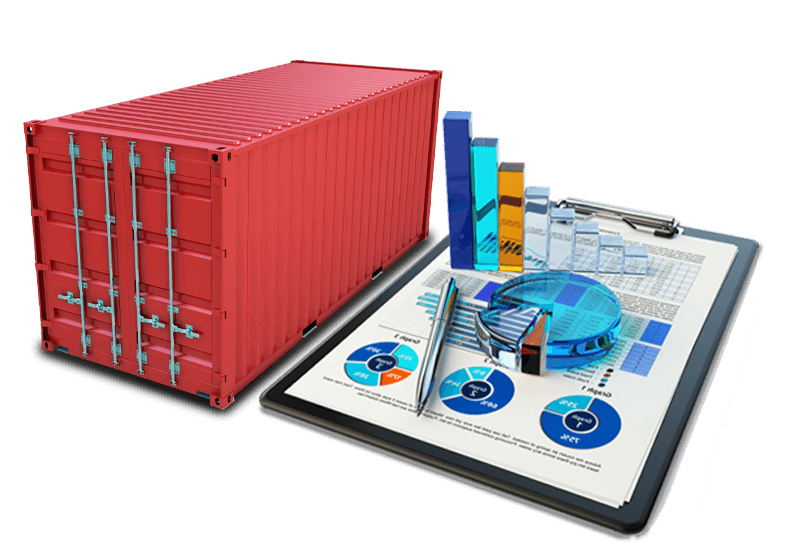In the vast interconnected global economy, shipping containers serve as the lifeline for the transportation of goods across continents and oceans. However, the challenge of effectively tracking these containers has long plagued the industry, leading to lost or stolen cargo and logistical inefficiencies. Fortunately, recent advancements in technology have brought forth a groundbreaking solution – real-time tracking systems for shipping containers. This cutting-edge technology, incorporating GPS and cellular communication devices, empowers businesses to monitor their cargo with precision, ensuring heightened security and efficiency.

The Imperative of Tracking Shipping Containers
The smooth functioning of the global economy is heavily reliant on the seamless movement of goods through shipping containers. However, traditional tracking methods have proven to be cumbersome and time-consuming, resulting in significant losses due to cargo theft or misplacement. The introduction of real-time tracking technology addresses these challenges, enabling businesses to actively monitor their shipping containers in transit. This breakthrough fosters enhanced security, efficiency, and peace of mind for all stakeholders involved in the supply chain.
The Mechanics of Real-Time Tracking
Real-time tracking technology for shipping containers revolves around the utilization of GPS and cellular communication devices, seamlessly integrated onto the containers themselves. These devices transmit live location data to a centralized monitoring system, allowing businesses to track their cargo from any location worldwide. Furthermore, the system incorporates specialized sensors capable of detecting fluctuations in temperature, humidity, and other environmental factors that could adversely affect the cargo’s condition. Armed with this crucial information, companies can optimize shipping routes, guaranteeing the safe arrival of goods at their intended destinations in optimal condition.
Empowering Businesses: The Advantages of Real-Time Tracking
The adoption of real-time tracking technology for shipping containers ushers in a host of advantages for businesses operating in the global marketplace. Firstly, this innovation affords unparalleled visibility and control over cargo, resulting in heightened operational efficiency and cost savings. The ability to monitor shipments in real-time facilitates accurate and up-to-date communication with customers, assuring them of the precise status of their deliveries. Moreover, the incorporation of sensors within the system acts as a preventive measure against cargo damage, significantly reducing the risk of financial losses. Overall, this groundbreaking technology represents a game-changer for businesses relying on shipping to transport their products efficiently and securely to market.
Real-Time Monitoring and Tracking Capabilities
The core feature of real-time tracking technology lies in its ability to provide continuous monitoring and tracking capabilities, enabling businesses to maintain a vigilant eye on their cargo throughout the transportation process. By swiftly identifying any issues or delays, companies can proactively address them before they escalate into major challenges. Sensors embedded within the containers collect data on location, temperature, humidity, and other vital factors, which is then relayed to a centralized system accessible to businesses and their customers in real-time. This heightened visibility and control enable businesses to optimize their operations and deliver superior service to their customers.
Integration with Existing Logistics Systems for Streamlined Operations
An additional key advantage of real-time tracking technology lies in its seamless integration with other logistics systems, leading to enhanced operational efficiency. The wealth of data collected by the tracking system can be leveraged to optimize various facets of the supply chain. For instance, businesses can utilize real-time container location and status information to plan more efficient routes, reduce transit times, and mitigate delays. Furthermore, the data gathered can inform inventory management decisions, ensuring optimal stock levels at all times. By integrating the tracking system with other logistics processes, businesses can create a unified and streamlined supply chain, ultimately delivering superior outcomes for their customers.
Key Statistics
Table 1: Impact of Cargo Theft on Global Supply Chains (2019-2023)
| Year | Reported Value (in billions) | Source |
| 2019 | $22.6 | BSI and TT Club Report |
| 2020 | $21.6 | BSI and TT Club Report |
| 2021 | $23.4 | BSI and TT Club Report |
| 2022 | $24.1 | BSI and TT Club Report |
| 2023* | $26.3 | Projected based on industry trends |
Please note that the value for 2023 is a projection.
*Projected cost of cargo theft for 2023 based on an annual increase of 4% from 2022 (Source: BSI and TT Club Report)
Table 2: Advantages of Real-Time Tracking Technology
| Benefit | Description |
| Enhanced Visibility and Control | Real-time monitoring and tracking capabilities provide businesses with unparalleled visibility and control over their cargo, enabling proactive intervention and resolution of potential issues. |
| Improved Operational Efficiency | Integration with existing logistics systems allows for data-driven decision-making, optimizing routes, transit times, and inventory management, leading to increased operational efficiency. |
| Superior Customer Service | Accurate and up-to-date information on shipment status allows businesses to provide customers with real-time updates, fostering trust and satisfaction. |
| Risk Mitigation | Sensors embedded within the containers detect environmental fluctuations, enabling proactive measures to prevent cargo damage and minimize financial losses. |
Sources:
- BSI and TT Club Report. “BSI and TT Club Cargo Theft Report 2020.” (2020).
- BSI and TT Club Report. “BSI and TT Club Cargo Theft Report 2021.” (2021).
The advent of real-time tracking technology for shipping containers heralds a new era of efficiency and security in global logistics. By leveraging GPS and cellular communication devices, businesses can now actively monitor their cargo, minimizing the risk of theft and ensuring optimal conditions during transit. The integration of this technology with existing logistics systems further bolsters operational efficiency and customer satisfaction. As the global economy continues to rely on the seamless movement of goods, real-time tracking for shipping containers emerges as a vital tool, empowering businesses to navigate the complexities of the supply chain with confidence and precision.
Check out our Blog for more Logistics insights, tips and news


